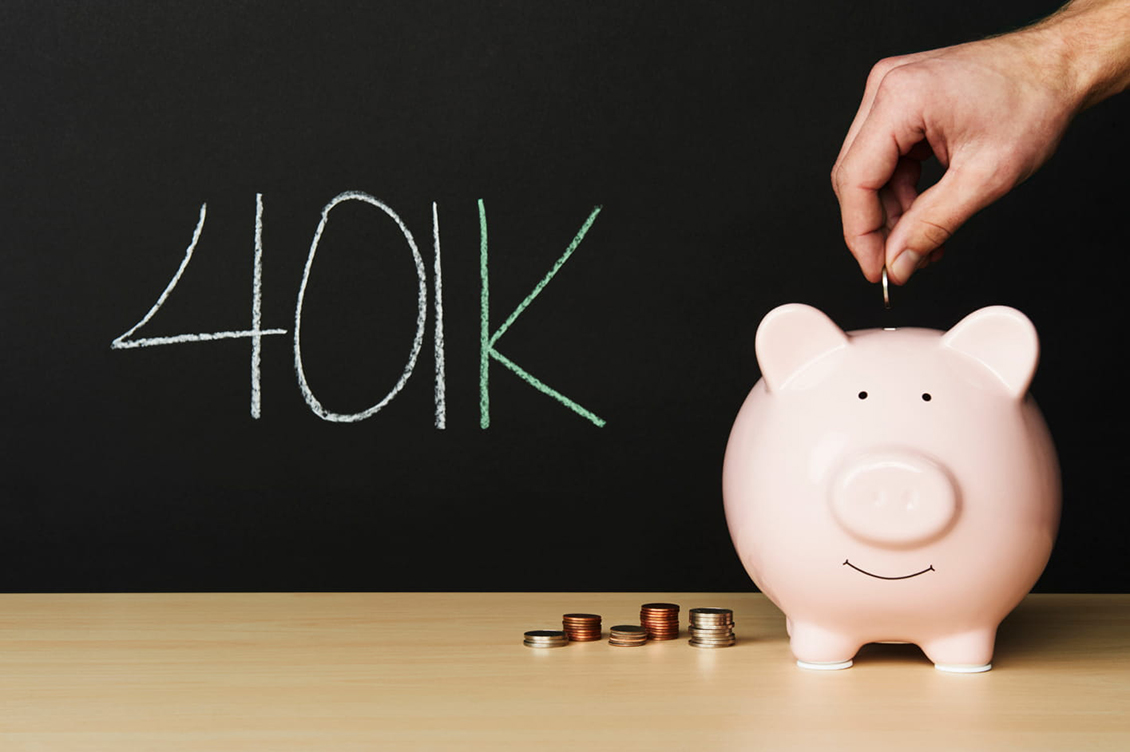Five 401k Myths Debunked
Pensions are like prehistoric creatures—they once ruled the retirement savings world—but have gone nearly extinct (we still have birds and reptiles) due to a changing environment. Our parents and grandparents may have been fortunate to have their employer pensions plus Social Security benefits cover basic expenses in retirement. Over the last few decades, major employers have converted their pension plans to other retirement programs or eliminated the option for newly hired employees. This means that, today, each worker is to bear the burden of saving for his/her own retirement years. And with retirement lasting 30 years or more, that can add up to a few million to sustain your desired lifestyle.
For eligible employees of companies that offer such programs, your 401k plan is usually the easiest place to start your retirement savings. Over the years, and having taught financial planning workshops in major Bay Area companies, I have had the opportunity to field many questions about 401k plans. Let me help debunk five of the common myths about employer-sponsored 401k plans.
Myth 1: 401k plan investments are free OR my employer picks up all the costs
To my knowledge, there are no investment managers who work for free. There are always costs—it is just a question of who is paying them. By law, plan providers are required to send you quarterly statements with fees disclosed and access to the fund’s prospectus which outlines fees and investment management policies. Each fund has an investment manager fee that is built into the stated performance of the fund. Your performance report will reflect your fund’s return net of the investment fees. The administrative fees to cover record-keeping, accounting and legal fees may be added as a percentage of the fund’s fee or a flat annual fee. Some employers will cover the administrative fees for employees and some do not. Fees are important to consider in your selection of investments but should not be the only consideration. Funds with higher fees may be more diversified or demonstrate a stronger performance track record. It is all about value.
Myth 2: 401k plans offer a wide selection of investment options
The number of investment options in 401k plans continues to decrease. Employers are responsible for the due diligence of plan investment options and responsible for reasonable education of the options. Therefore, in order to not overwhelm employees or overburden their oversight committee, most employers keep their selections to 10-15 asset class options plus the Target Retirement Funds that maintain a mix of stocks to bonds based on your targeted retirement date. In my experience, the typical line-up of equity options are solid but quite light on the fixed income options, with only 1 to 2 bond asset class choices. As employees get closer to retirement, it is usually preferable to have a larger percentage of your assets dedicated to lower-risk, fixed income funds than higher-risk equity funds. That is why I see so many employees initiate an “in-service”, tax-deferred rollover at age 59 ½ to a Traditional IRA in order to open up the universe of available investment options.
Myth 3: Loans from my 401k are an easy, inexpensive way to cover emergency needs
Loans from your 401k may be a preferable option to taking an IRA distribution, including taxes and penalties, or using high-interest rate credit cards to cover the emergency. First, you need to check the terms and conditions of your employer’s 401k loan program. If offered, you may be eligible for a loan of 50% of the balance of your 401k or $50,000, whichever is smaller. You will have to pay back the loan through your paycheck at a rate of 4-8%. The good news is that you are paying the interest to yourself, not to a bank or credit card company. But be careful. Check on the pay back requirements if you leave your employer or are terminated. In this case, if you do not pay the loan back within a specified time period, the loan will be considered a distribution and you will have to pay a 10% penalty if you are not at least 59 ½ and will pay taxes on the entire outstanding balance. Also, you will lose the opportunity cost of not being investing in a high growth stock market. But emergencies are emergencies and a 401k loan may be your best option.
Myth 4: I am over the income limit or too old to contribute to a Roth 401k
I am pleased to see more and more Bay Area employers offering Roth 401k’s in their retirement programs. Unlike contributing to a pre-tax 401k plan, contributions to a Roth 401k do not offer any immediate tax relief but the savings grow tax deferred and the gain is never taxed as long as your first contribution was at least five years ago and you are 59 ½. (See me for exceptions if you are retiring between 55 and 59 ½.) For example, if you contribute $100,000 to your pre-tax 401k, and it triples in value during your working years, all $300,000 will be taxed at your ordinary tax rate in the years of distribution. If you contribute $100,000 to a Roth 401k, you were taxed in the years you made the contributions, but the additional $200,000 of gain will be tax-free, saving you between $10,000 and $70,000 in Federal taxes, depending on your tax bracket. Unlike contributions to a Roth IRA, there is no income limit for who can contribute to his/her company 401k Roth. Your combined contributions to your pre-tax 401k and Roth 401k cannot exceed $19,500, or $26,000 if you are 50 years or older. There is a breakpoint when contributions to the pre-tax vs Roth 401k is more valuable. Younger employees in lower income earning years will get more long-term value from Roth 401k contributions than preretirees earning higher incomes. However, I have not met one person in retirement who did not wish he/she had a basket of tax-free money to enjoy.
Myth 5: If I continue to contribute the maximum amount allowed to my 401k, I will have enough in my retirement nest egg
There are many retirement calculators out there but the easiest back-of-the-napkin math is to calculate 25 times your annual need, including taxes. For instance, if you need $100,000 per year to maintain your lifestyle, and your Social Security benefit is estimated to pay you $30,000 per year, you will need $70,000 per year from your investments. If we calculate 25 X $70,000, this equals a need of $1,750,000 in your retirement nest egg to support a 30 year retirement. If your expenses are projected at $200,000 per year, you will need a nest egg of over $4.2 million. Depending on your current age and your ability to save for retirement, you may or may not be on track by contributing to your 401k only.
In summary, employer sponsored 401k plans are extremely valuable as tax-advantaged retirement savings tools, and there are many creative strategies to optimize your tax and savings goals. A CERTIFIED FINANCIAL PLANNER® can help you evaluate your 401k plan compared to other savings and investment options, analyze the preferred contribution levels based on your situation, and calculate how much you should be saving to retire when you want with the same or better lifestyle than you enjoy today.
Please note, changes in tax laws may occur at any time and could have a substantial impact upon each person’s situation. While we are familiar with the tax provisions of the issues presented herein, as Financial Advisors of RJFS, we are not qualified to render advice on tax or legal matters. You should discuss tax or legal matters with the appropriate professional. Matching contributions from your employer may be subject to a vesting schedule. Please consult with your financial advisor for more information.


